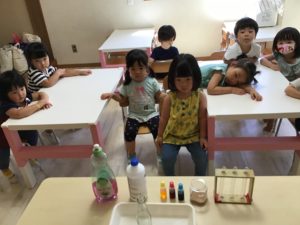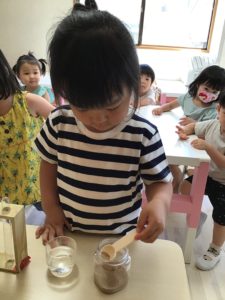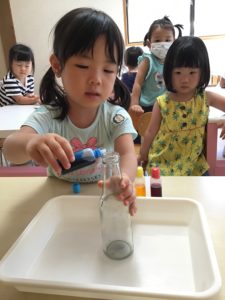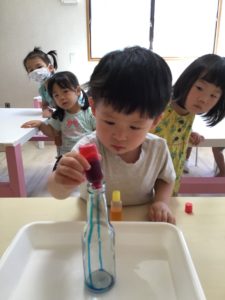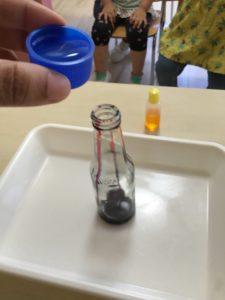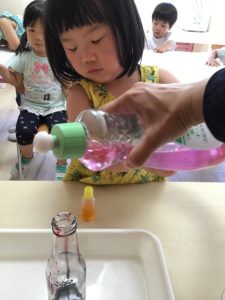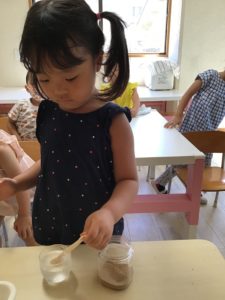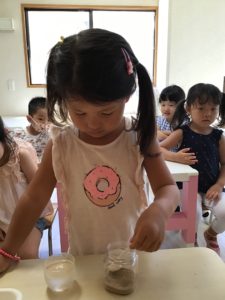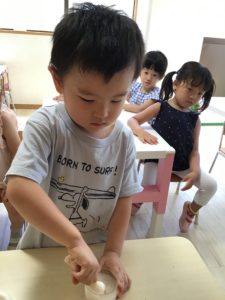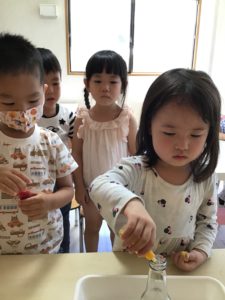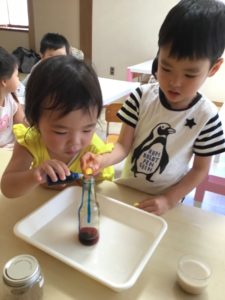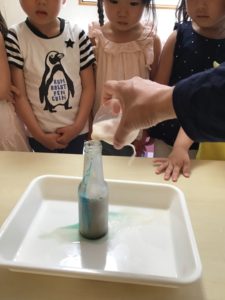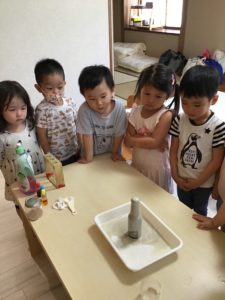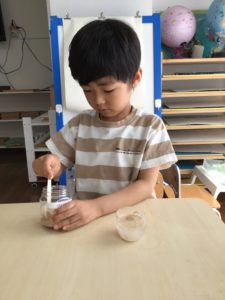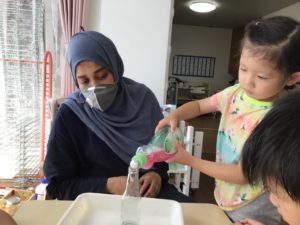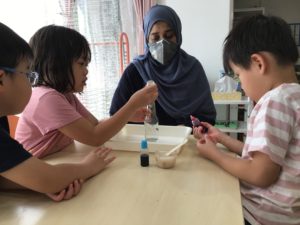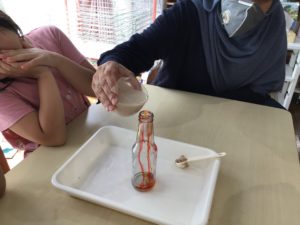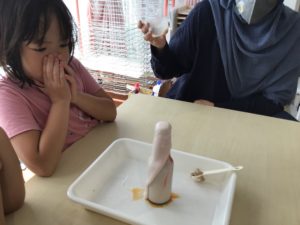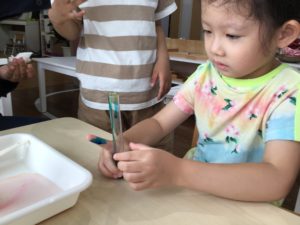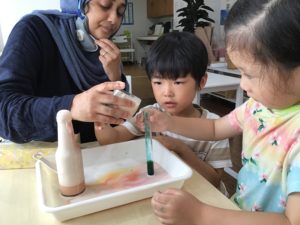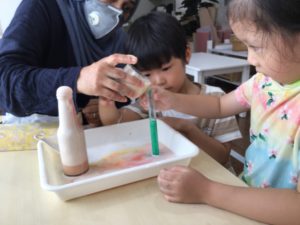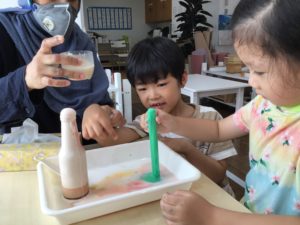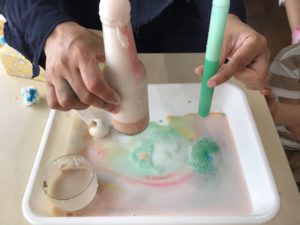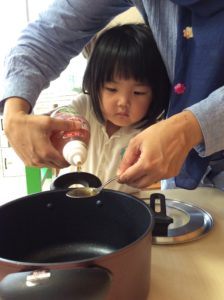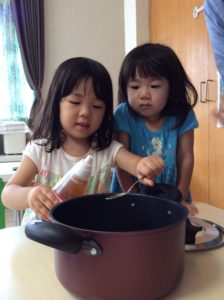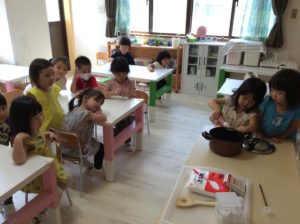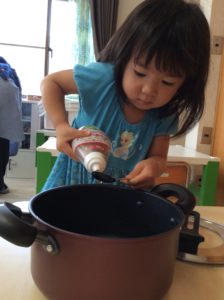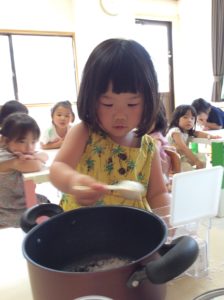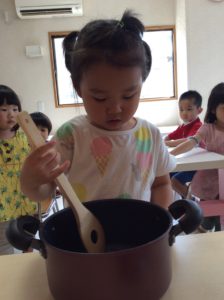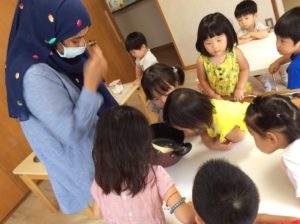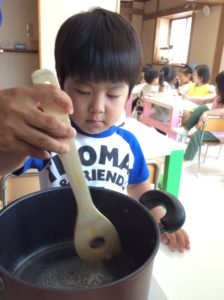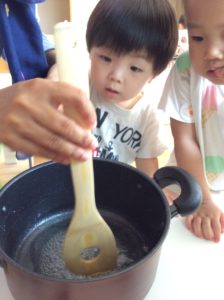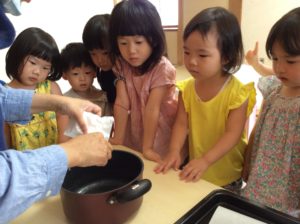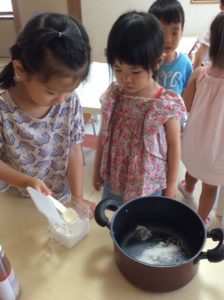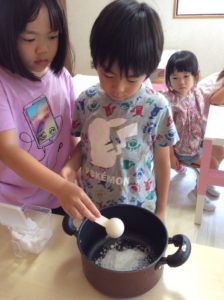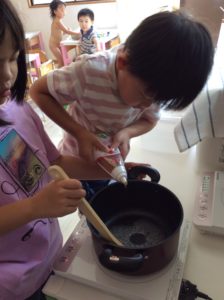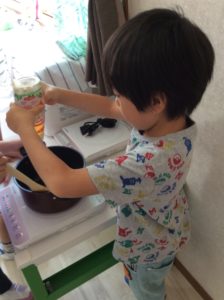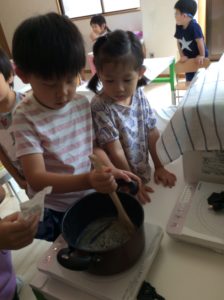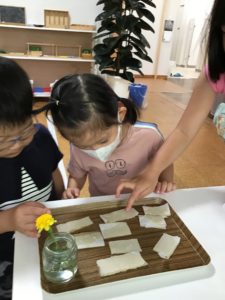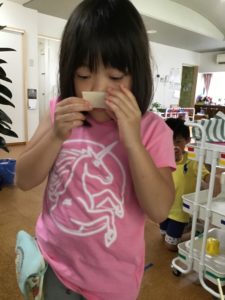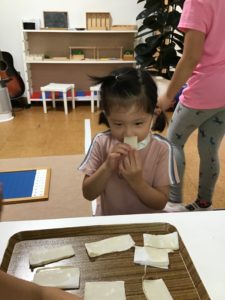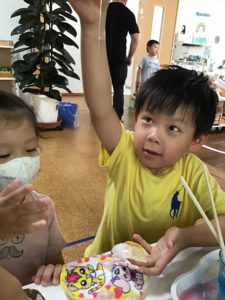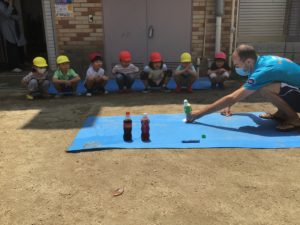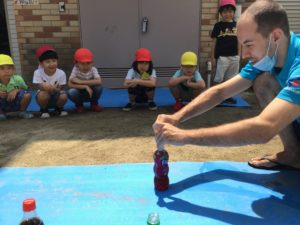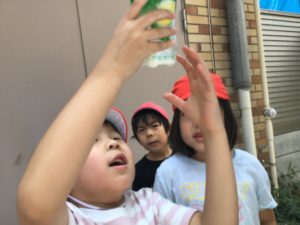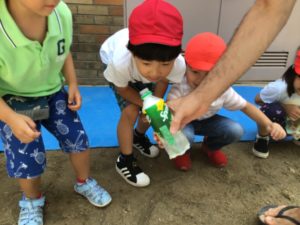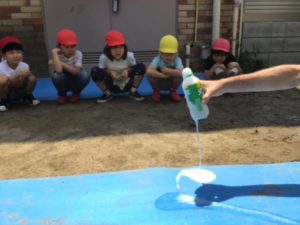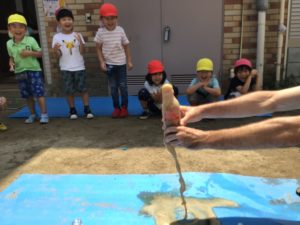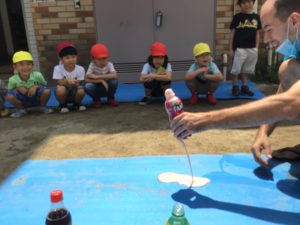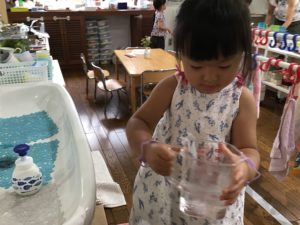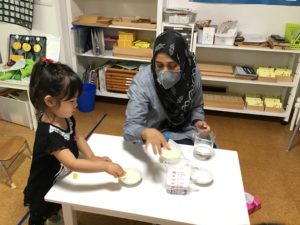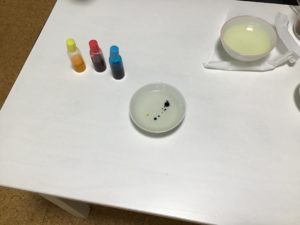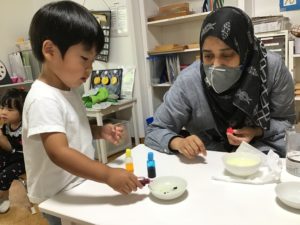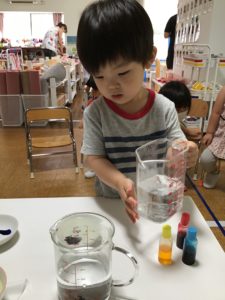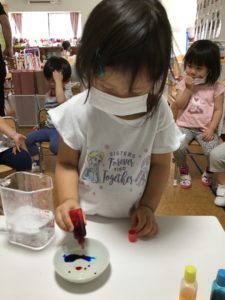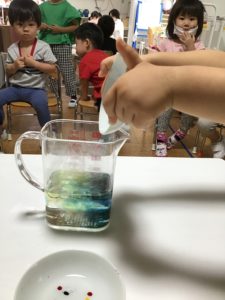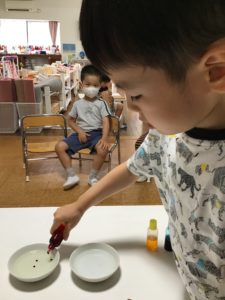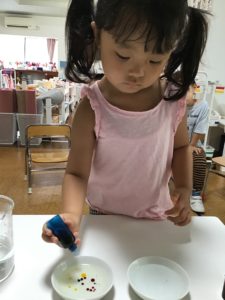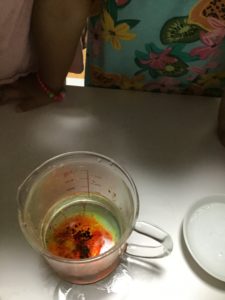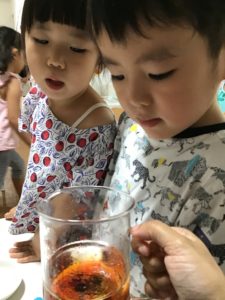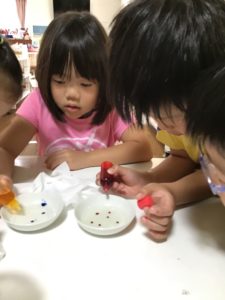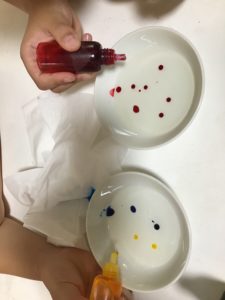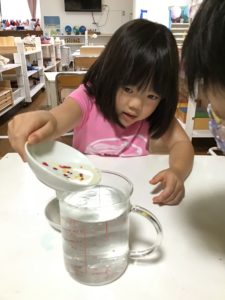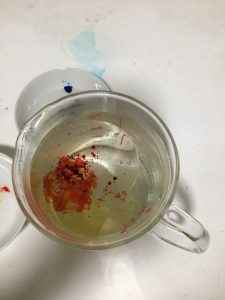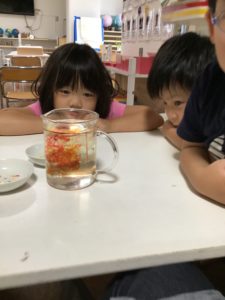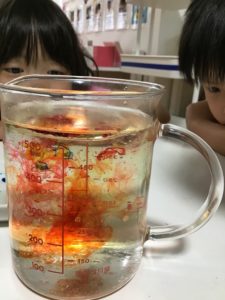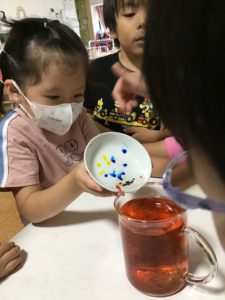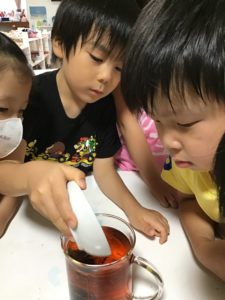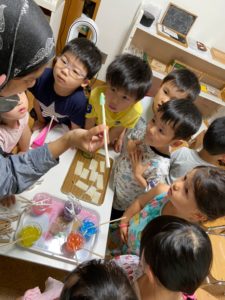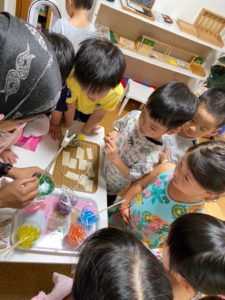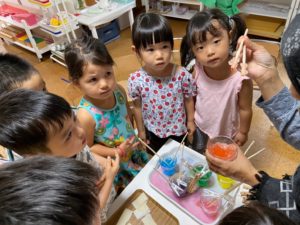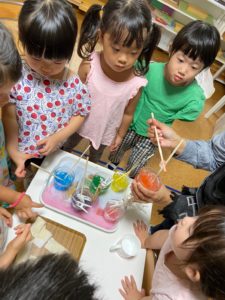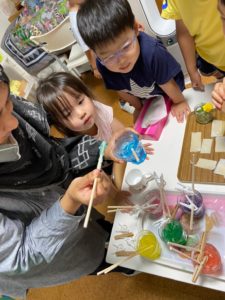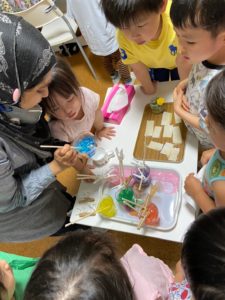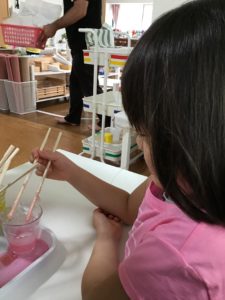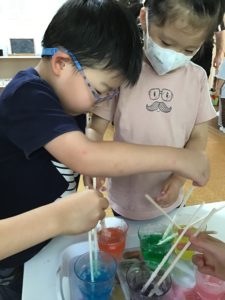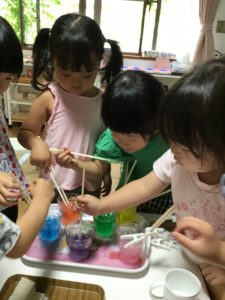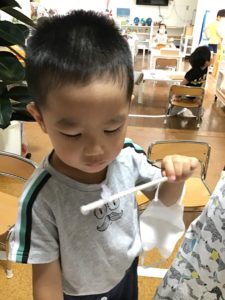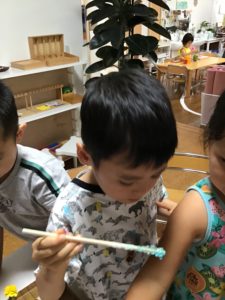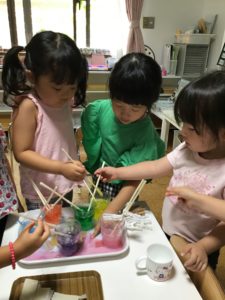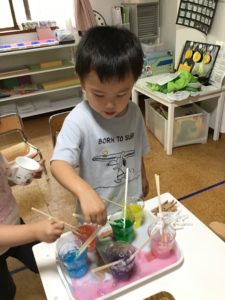We finished our “Edible Chemistry” last week. Children were excited and fascinated by observing the experiments and seeing the outcome. Below are the experiments in detail.
Elephant Toothpaste
The aim of this experiment was to create a giant foaming reaction using liquid soap, yeast and *hydrogen peroxide.
Once all the above ingredients were mixed, it rapidly started foaming. There was so much foam that it looked as if it had been squeezed out of a giant tube of toothpaste, big enough for an elephant! A little food coloring was added to make the experiment a little more exciting.
*Hydrogen peroxide is a commonly used antiseptic.
Honey Comb
For this experiment we used sugar, honey and bicarbonate of soda. We made a thick sugar syrup using the sugar and honey, and then added the bicarbonate of soda. The children eagerly watched as it foamed and bubbled; rising up to the brim of the pot. The same experiment was repeated with the older kids, but we waited for the syrup to caramelize before adding the bicarbonate of soda. The children kept stirring the pot while the mixture caramelized. Then we added the bicarbonate of soda. The reaction was much faster than before as it almost instantly bubbled up. When it finally stopped foaming, we poured it onto a cooking sheet to cool down for 3 hours. The final outcome is below.
The children could enjoy feeling the texture and smell the sweetness of the honey in the honey comb.
Soda explosion
On the first day, Frontier and Pioneer kids observed how Mentos reacts in fizzy drinks. We tried this experiment using three fizzy drink flavors: grape, lemon and cola. The explosion was highest in cola and lowest in grape. To build up on the excitement, we repeated the experiment using a 1-liter cola bottle and more Mentos. It created a massive explosion, much higher than the others. The children were highly excited to see such a huge reaction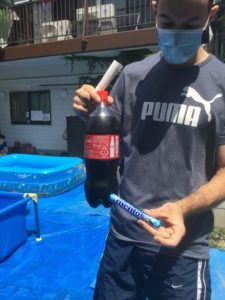
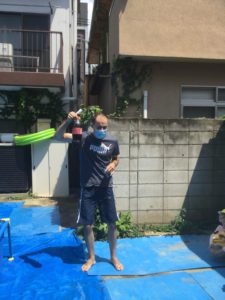
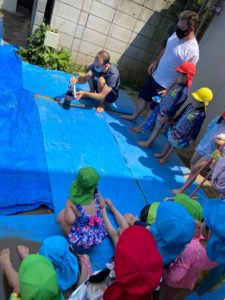
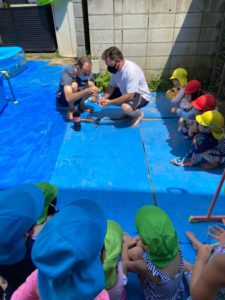
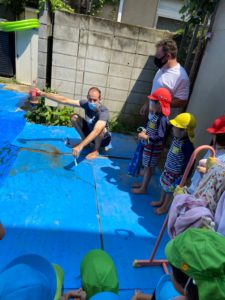


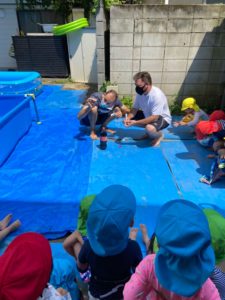
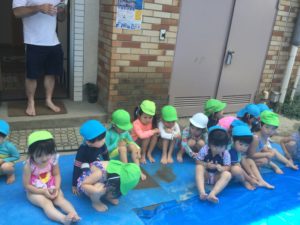
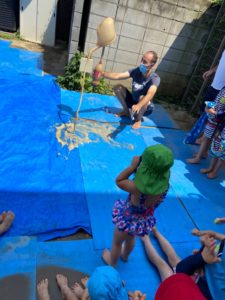
Massive Explotion!!!
Fireworks in a jar
This experiment was done by filling half a jar with lukewarm water and pouring a food coloring and oil mixture on top of it. As the water and oil mixture combine, the food coloring separates from the oil and diffuses into the water. The coloring then expands and begin to mix with the other colors, forming a ‘Fireworks effect’.
Rock candy Making
We observed the rock candy 10 days after the start of the experiment, just like how we’ve been observing it every day. On the 10th day they could see how the sugar in the syrup has crystallized around the chopstick. They could feel the texture and smell how it was made, and how it took some time for the crystallization to occur.


